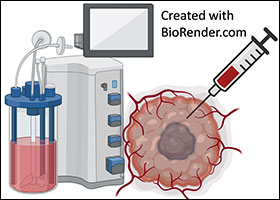At the Frontiers of Human Glioblastoma: Challenges in Introducing New Therapeutic Strategies
A special issue of Brain Sciences (ISSN 2076-3425). This special issue belongs to the section "Molecular and Cellular Neuroscience".
Deadline for manuscript submissions: closed (15 June 2021) | Viewed by 21001

Special Issue Editors
Interests: molecular neurooncology; glioblastoma; tumor microenvironment; 3D cultures; innovative anticancer drugs
Special Issues, Collections and Topics in MDPI journals
Interests: neurooncology, glioblastoma, egfr, tumor microenvironment, preclinical assays
Special Issue Information
Dear Colleagues,
Adult Glioblastoma is a highly aggressive malignant brain tumor. Although numerous mechanistic studies have revealed and underlined the unique behavior of Glioblastoma, still, only a few chemotherapeutics are used for its treatment. The standard procedure, which has not been modified in the last two decades, includes surgical resection followed by radiotherapy with concomitant temozolomide chemotherapy. Unfortunately, glioblastoma recurrence is extremely frequent, and the median patient survival remains 15 to 18 months from diagnosis. Problems with the introduction of new therapies, even as adjuvants, include the low penetration of anticancer drugs in the brain due to the blood–brain barrier, the high inter- and intra-tumor heterogeneity of glioblastoma cells, as well as their invasiveness and resistance to therapy. Many promising targeted therapies based on preclinical studies failed to prolong glioblastoma patient survival and the stagnation implementing new therapeutic strategies is evident. Therefore, new glioblastoma models that will improve our knowledge and allow investigation of new therapeutic strategies under conditions that mimic the situation in patients with high fidelity are demanded.
This Special Issue will assemble preclinical and clinical studies of glioblastoma, from pathophysiological mechanisms to new therapeutic strategies. Studies based on new glioblastoma models (including 3D cultures, bioprinting, microfluidic devices, and animal models); clinical investigations; bioinformatics; and mathematical modeling of the patient’s response are highly welcome. In addition, reviews referring to glioblastoma research and therapy will be appreciated.
Dr. Milica Pešić
Dr. Pilar Sánchez Gómez
Dr. Lisa Oliver
Guest Editors
Manuscript Submission Information
Manuscripts should be submitted online at www.mdpi.com by registering and logging in to this website. Once you are registered, click here to go to the submission form. Manuscripts can be submitted until the deadline. All submissions that pass pre-check are peer-reviewed. Accepted papers will be published continuously in the journal (as soon as accepted) and will be listed together on the special issue website. Research articles, review articles as well as short communications are invited. For planned papers, a title and short abstract (about 100 words) can be sent to the Editorial Office for announcement on this website.
Submitted manuscripts should not have been published previously, nor be under consideration for publication elsewhere (except conference proceedings papers). All manuscripts are thoroughly refereed through a single-blind peer-review process. A guide for authors and other relevant information for submission of manuscripts is available on the Instructions for Authors page. Brain Sciences is an international peer-reviewed open access monthly journal published by MDPI.
Please visit the Instructions for Authors page before submitting a manuscript. The Article Processing Charge (APC) for publication in this open access journal is 2200 CHF (Swiss Francs). Submitted papers should be well formatted and use good English. Authors may use MDPI's English editing service prior to publication or during author revisions.
Keywords
- glioblastoma
- new therapeutic strategies
- preclinical models
- novel clinical studies
- bioinformatics
- mathematical modeling
- resistance to therapy







